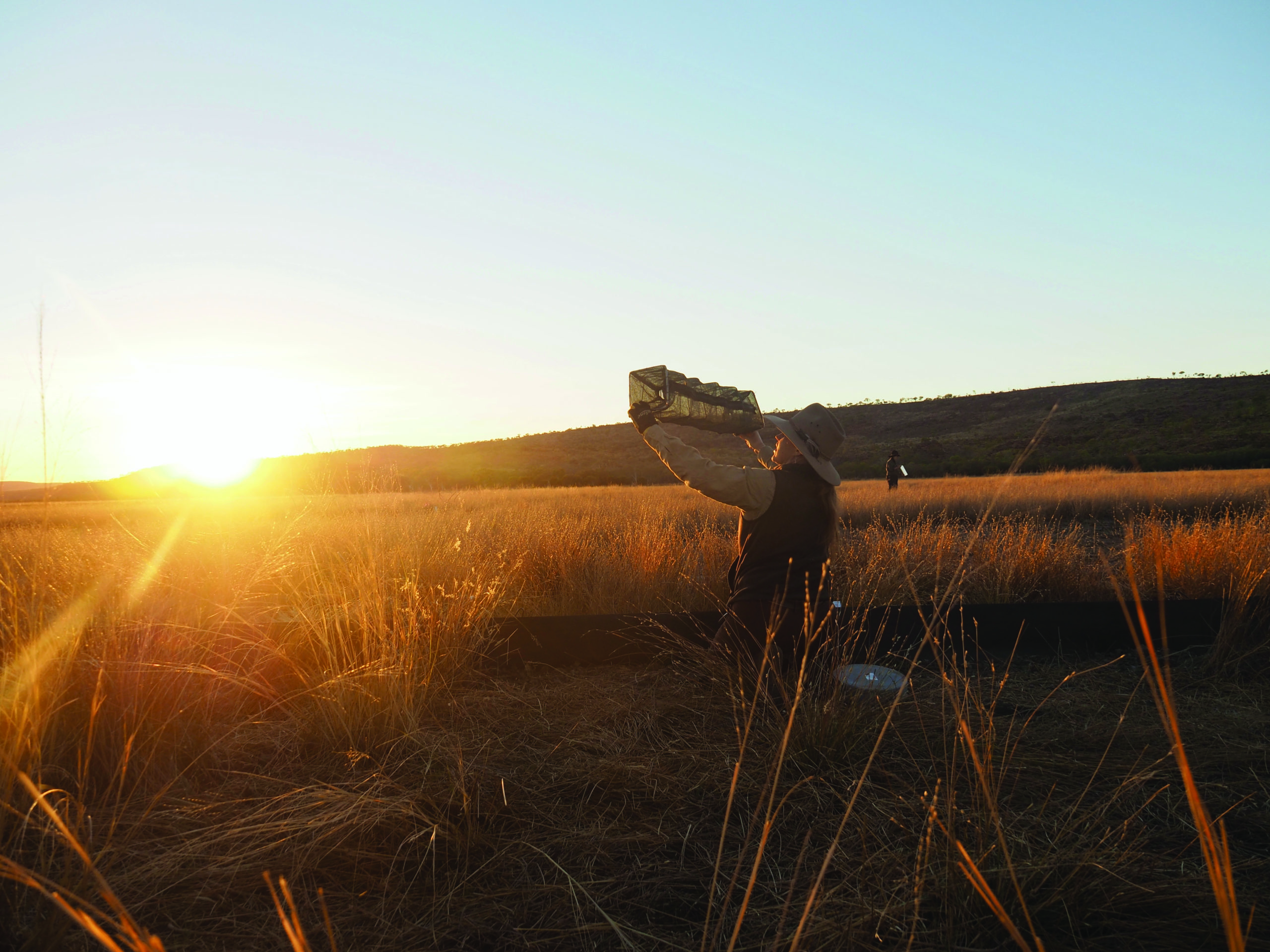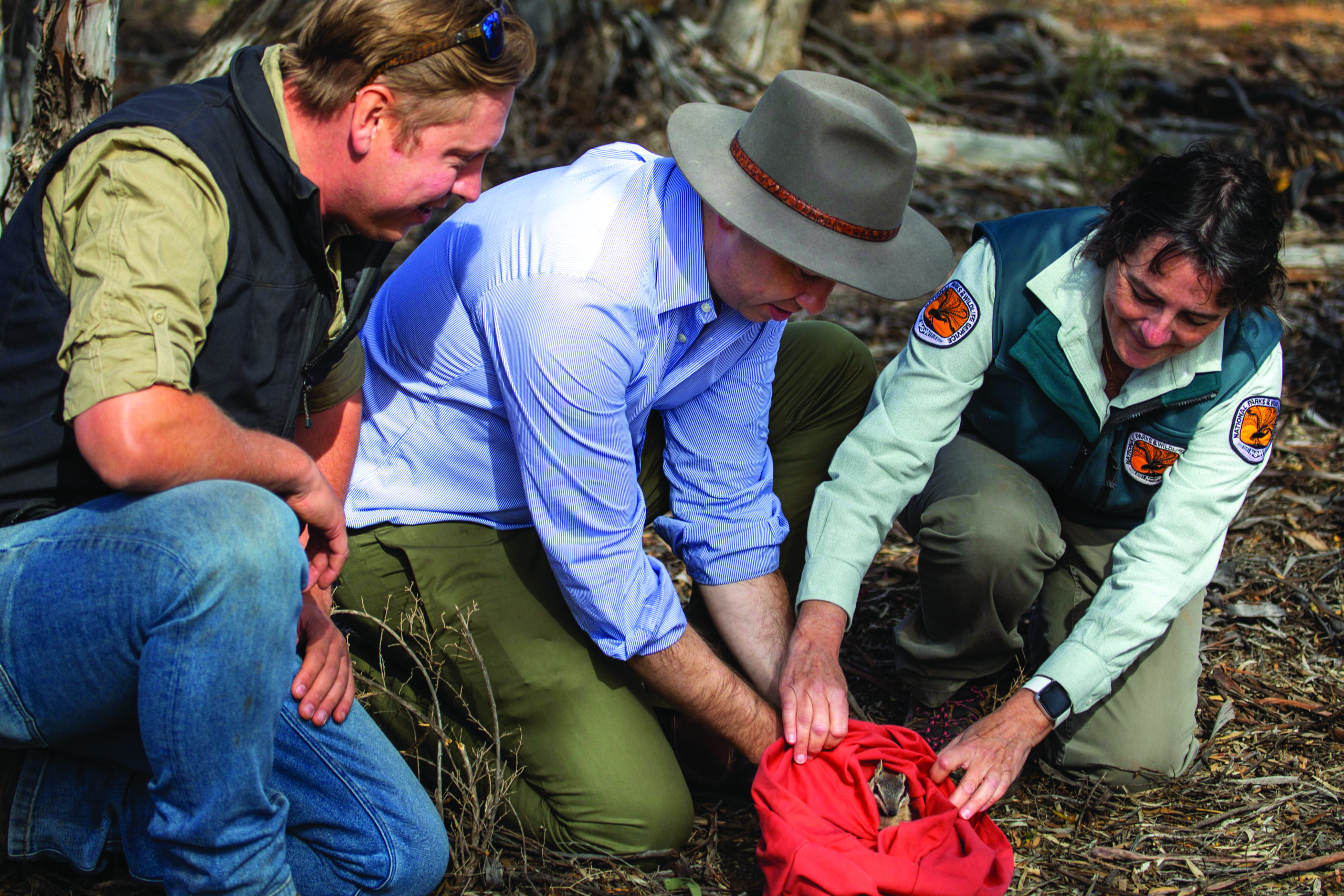By Tim Allard, Chief Executive Officer and Dr Hannah Sheppard Brennand, Writer
AWC’s mission is the effective conservation of all Australian animals and the habitats in which they live. Our long-term vision is for this country’s unique biodiversity to be valued and effectively conserved by an engaged community. It is self-evident that to achieve these objectives, we must not work in isolation, but rather collaborate with other landowners to extend the AWC approach beyond our sanctuaries. Partnerships offer an effective means for achieving our mission and generating better conservation outcomes for Australia’s biodiversity on a landscape scale. With more than 1,800 animals and plants now on the threatened species list, time is of the essence.
For the last five years, AWC’s strategy has increasingly focused on establishing innovative partnerships. These provide opportunities to create replicable templates for conservation management to arrest the alarming decline of Australia’s biodiversity and restore our natural capital. At present AWC protects a large proportion of Australia’s native species: 74 per cent of terrestrial mammals, 88 per cent of terrestrial birds, 56 per cent of amphibians and 54 per cent of reptiles. This directs our search for strategic collaborations that can help close these gaps, prioritising species not effectively conserved, or not currently represented on AWC’s inventory and boosting the representation of others.
As land values across the country increase, partnerships offer a powerful and rapid pathway for effectively conserving specific species and for positively influencing conservation on a massive scale. Across Australia, Indigenous Protected Areas cover 74 million hectares of land and pastoral leases a further 338 million hectares. We see exciting opportunities here to shape conservation into the future by establishing landmark partnerships and bolstering Indigenous management programs.
 J Clarke/AWC
J Clarke/AWC
AWC’s partnerships take many forms, and while implementation and priorities often differ, they share a common focus on delivering measurable conservation outcomes along with co-benefits for communities.
Government partnerships provide unique opportunities to influence conservation on the public protected area estate. Key to the success of these partnerships is understanding the complexities of government processes, accepting differences in implementation and taking a pragmatic approach that is focused on conservation outcomes. AWC’s first government partnership was established at North Head with Sydney Harbour Federation Trust in 2009, reintroducing locally extinct species on Sydney’s doorstep.
In 2016, AWC partnered with the Department of Defence to conserve Australia’s second largest (569,871 hectare) military training area at Yampi Sound in Western Australia. Central to the partnership is the involvement of Dambimangari People, with access to their traditional lands at Yampi enabled through this project. AWC and Dambimangari Rangers deploy large-scale weed, fire and feral herbivore management programs across this vast property, located in the only part of mainland Australia to have suffered no wildlife extinctions. Here, AWC’s science program is helping to increase our understanding of threatened and declining wildlife such as Golden Bandicoots (Isoodon auratus), Northern Quolls (Dasyurus hallucatus) and Northern Masked Owls (Tyto novaehollandiae kimberli) – last October, researcher and AWC collaborator Nigel Jackett recorded the first ever breeding site for the owl in the Kimberley.
AWC and the NSW Government also entered into a historic conservation partnership in 2016, part of the Saving our Species program, to reintroduce up to 11 regionally extinct mammal species to Mallee Cliffs National Park and Pilliga State Conservation Area. To date this partnership has seen regionally extinct Bilbies (Macrotis lagotis), Numbats (Myrmecobius fasciatus), Bridled Nailtail Wallabies (Onychogalea fraenata) and Greater Stick-nest Rats (Leporillus conditor) reintroduced to NSW national parks, after an absence of more than a century. In 2020, the largest feral predator-free fenced area on mainland Australia was established at Mallee Cliffs, covering 9,570 hectares.
 B Leue/AWC
B Leue/AWC
AWC acknowledges the strong, active and ongoing Indigenous connection to Country, and our conservation partnerships focus on working together to look after the land. Key to the success of these partnerships is recognition of the importance of mutual and respectful exchange of culture, Aboriginal knowledge, ecological understanding and contemporary science. Across Australia our Indigenous partnerships are delivering positive conservation, socio-economic and cultural outcomes.
In the Kimberley – one of the planet’s great wild places – AWC works in partnership with Dambimangari Aboriginal Corporation (DAC), Wilinggin Aboriginal Corporation (WAC) and the Yulmbu Aboriginal Corporation to support Indigenous land management and conservation across 2.8 million hectares. These partnerships provide a new template, delivering measurable conservation outcomes. AWC supports these partnerships with resources, works to provide employment outcomes, helps to build Traditional Owner capacity and exchanges knowledge. AWC gains invaluable insights into traditional methods of caring for country refined over tens of thousands of years. The collaborative model sees the delivery of fire management, feral animal and weed control, species inventory and Ecohealth monitoring.
The ground-breaking DAC-AWC Partnership was established in 2018. A substantial science program is being implemented on Dambimangari Country and inventory work carried out by DAC Rangers and AWC scientists has detected rare species such as the Kimberley Brush-tailed Phascogale (Phascogale tapoatafa kimberleyensis) and Nabarlek (Petrogale concinna), a tiny, shy macropod. Over 10,000 trap nights were conducted in 2020 and 65 species were added to the inventory list.
The innovative and ambitious WAC-AWC Partnership was established in 2019, with WAC and AWC working collaboratively across 1.73 million hectares to enhance conservation science and land management across the Kimberley. Wilinggin’s Wunggurr Rangers have been working with Ngarinyin Traditional Owners for over 10 years, protecting the natural and cultural values of the Wilinggin Indigenous Protected Area. The WAC-AWC Partnership is a collaboration to support and enhance WAC management programs and protect an array of threatened species including the endangered Black-footed Tree-rat (Mesembriomys gouldii).
At Newhaven in Central Australia, AWC has worked with Warlpiri Rangers and Traditional Owners for over a decade. The Newhaven Warlpiri Rangers (led by ace mother-daughter team Alice Henwood and Christine Ellis, supported by Benedict Mosquito) are renowned for their outstanding cat-tracking skills and played an integral role in establishing the Stage 1 feral predator-free fenced area that will see at least 10 threatened mammal species restored here. Since then, Mala (Lagorchestes hirsutus) – a culturally significant species – have been reintroduced and, in 2020, Red-tailed Phascogales (Phascogale calura) were reintroduced. At Mount Zero-Taravale, the Lamb Range and Mt Lewis in Queensland’s Wet Tropics, AWC is collaborating with a number of Traditional Owner groups to help save the Northern Bettong (Bettongia tropica) from extinction.
More than half of mainland Australia is under agricultural or pastoral management. AWC’s partnership with Bullo River Station was launched in 2018 and provides an exciting new model, the first of its kind in Australia, that allows conservation and pastoralism to work hand-in-hand.
At Bullo River Station, AWC delivers fire, feral animal and weed control programs, species inventory surveys and Ecohealth monitoring. Early in the partnership, inventory surveys detected the Wyulda (Scaly-tailed Possum, Wyulda squamicaudata) – the first record of this elusive species in the Northern Territory and an extension of its known range. Recent early wet season targeted burns have delivered ecologically friendly fire management across two thirds of Bullo River. This is creating a mosaic of vegetation of varying age-classes and helps to reduce the risk of intense wildfires in the late dry season, providing positive benefits for animals, vegetation communities, and the pastoral operation.
The success at Bullo River demonstrates that positive conservation outcomes can be achieved in tandem with a commercial and sustainable cattle operation. AWC plans to use this strategically significant model to further conservation opportunities in other parts of Australia and we are currently in negotiations to apply it on a larger scale on pastoral land.
All of AWC’s partnerships are an endorsement of our conservation efforts and provide models for best-practice conservation, both now and for the future. AWC is guided by our mission and vision and partnerships will play an increasingly significant role in our future.
Read and download this full issue of Wildlife Matters here.
Donate to help save Australia’s threatened wildlife and wild places